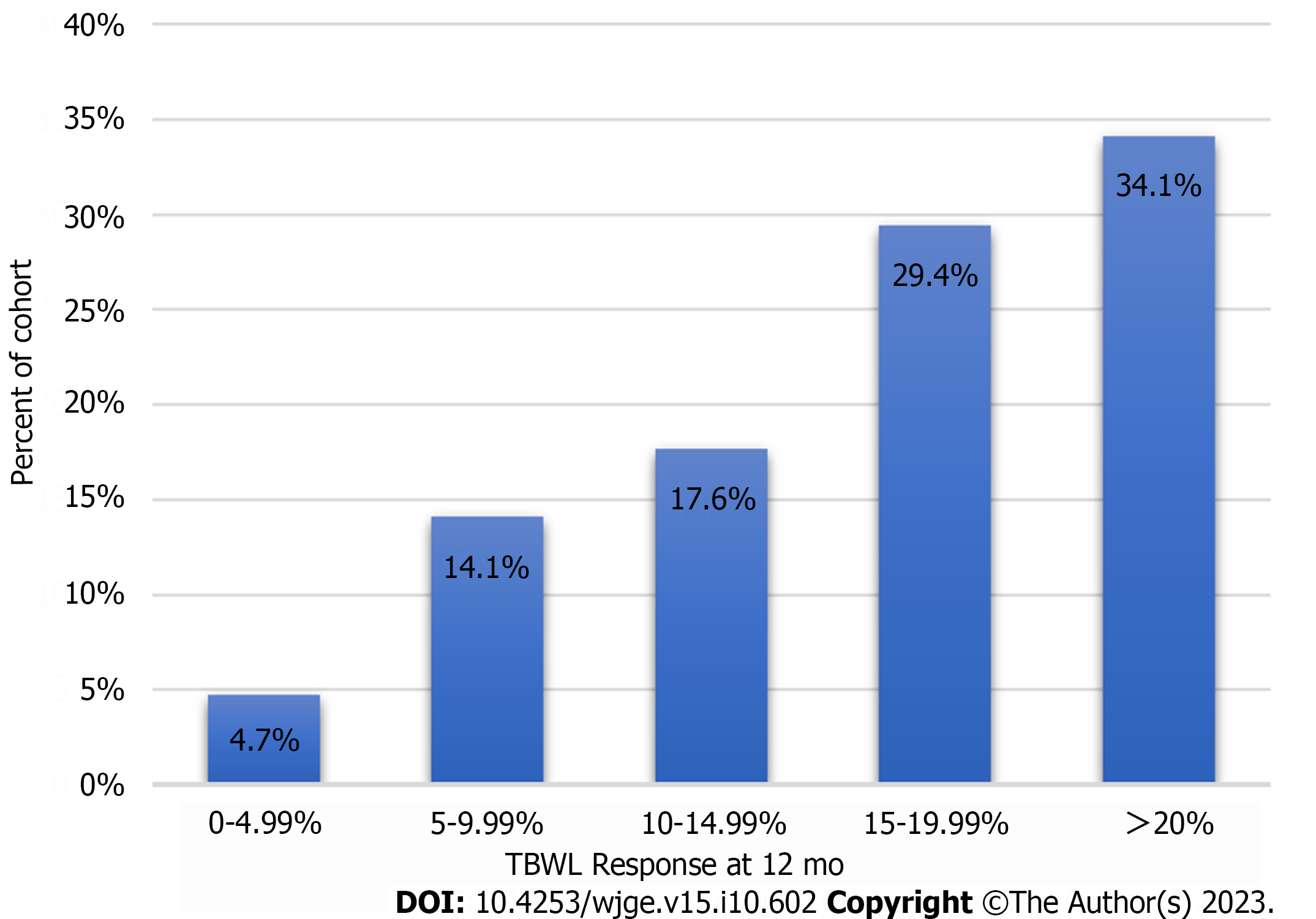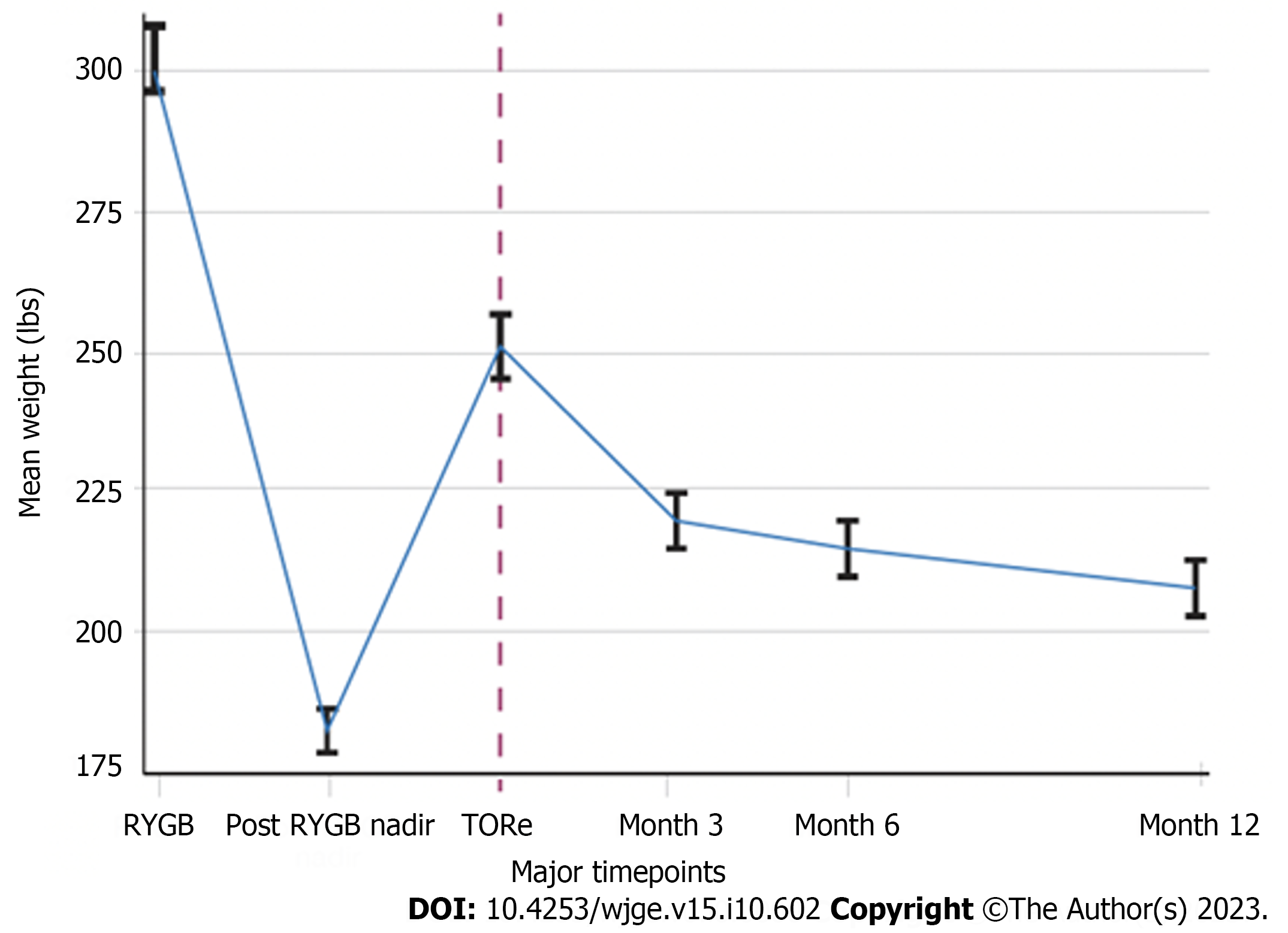Copyright
©The Author(s) 2023.
World J Gastrointest Endosc. Oct 16, 2023; 15(10): 602-613
Published online Oct 16, 2023. doi: 10.4253/wjge.v15.i10.602
Published online Oct 16, 2023. doi: 10.4253/wjge.v15.i10.602
Figure 1 Steps of transoral outlet reduction.
A: Examination of the pouch, outlet, and jejunal limbs. Gastrojejunal anastomosis (GJA) appears dilated; B: Circumferential mucosal ablation with argon plasma coagulation of the gastric tissue of GJA; C: Purse-string suturing of the outlet using the Overstitch endoscopic suturing system; D: Cinching of the suture over a through-the-scope fluid-filled balloon positioned through the outlet into the efferent jejunal limb; E: Final view of GJA after transoral outlet reduction; F: Healed appearance of GJA 12 wk after transoral outlet reduction.
Figure 2 Total body weight loss after transoral outlet reduction.
Weight loss from time of transoral outlet reduction (TORe) is represented over the following year. Total body weight loss represents response to TORe and does not include initial weight loss to gastric bypass. TORe: transoral outlet reduction.
Figure 3 Clinical response rates at 12 mo from transoral outlet reduction.
The percentage of the cohort achieving a total body weight loss response category at 12 mo is shown. Total body weight loss represents response to transoral outlet reduction and does not include initial weight loss to gastric bypass. TBWL: Total body weight loss.
Figure 4 Weight trajectory of cohort.
The mean and standard errors for weight at Roux-en-Y gastric bypass (RYGB), post-RYGB weight nadir, transoral outlet reduction (TORe), and the year after TORe are depicted for the cohort. Time for post-RYGB weight nadir is not known or specified. This figure illustrates the importance of TORe to interrupt and reverse the post-RYGB weight recurrence trajectory. RYGB: Roux-en-Y gastric bypass; TORe: Transoral outlet reduction.
- Citation: Maselli DB, Chittajallu V, Wooley C, Waseem A, Lee D, Secic M, Donnangelo LL, Coan B, McGowan CE. Transoral outlet reduction: Outcomes of endoscopic Roux-en-Y gastric bypass revision in 284 patients at a community practice. World J Gastrointest Endosc 2023; 15(10): 602-613
- URL: https://www.wjgnet.com/1948-5190/full/v15/i10/602.htm
- DOI: https://dx.doi.org/10.4253/wjge.v15.i10.602
















